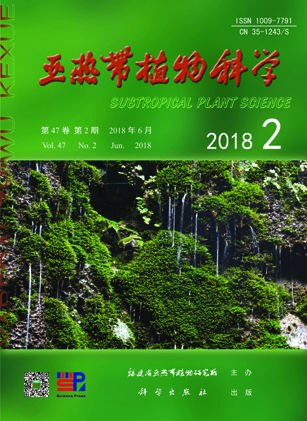|
|
Preliminary Study on Reproductive Features of Reintroduction Population of Cycas debaoensis
WANG Yun-hua,GAN Jin-jia,CHEN Ting,GONG Yi-qing,LU Yan-zhao,LI Nan
2018, 47(02):
134-139.
DOI: 10.3969/j.issn.1009-7791.2018.02.008
The reintroduction population of Cycas debaoensis in Huanglianshan nature reserve and its natural population in Fuping village of Guangxi were studied. Reproductive features, including number of flowering plant, male/female ratio, pollination, seed setting, seedling survival, were investigated. The results showed that: (1) In reintroduction and natural population, the number of flowering plants were 149 and 49, the male/female ratio were 3.96:1 and 4.44:1, the flowering plants account for 31.63% and 19.52%, and the natural seed setting rate were 60.53% and 86.53% respectively. (2) For unshed seeds, the seed germination rate were 53.13% and 42.51%, first-year seedling survival rate were 0 and 3.56%, respectively, while for the seeds spread by gravity and the external force (rainwater, wind and animal), the seed germination rate were 42.51% and 38.46% respectively, first-year seedling survival rate were 74.46% and 88.26% respectively. (3) As with Fuping natural population, the effective pollinator of C. debaoensis in Huanglianshan reintroduction population was Erotylidae beetles. In average, the amount of beetles in the reintroduction population was 23.5 per female cones while in the Fuping natural population was 32.1, the reintroduction population had less beetles than that in Fuping natural population. The following conclusions were drawn from the research: the seed setting rate of reintroduction population was lower than the natural population, which was probably due to the relatively small number of pollinators at reintroduction site. The seed dispersion by rodent and other external forces could significantly improve seedling survival rate and directly affect the planting and distribution of seedlings, and had important influence on replenishment and renewal of the population. On the whole, the reintroduction population of C. debaoensis in Huanglianshan had successfully completed the growth and reproduction process, and had the ability of self-renewal.
References |
Related Articles |
Metrics
|
